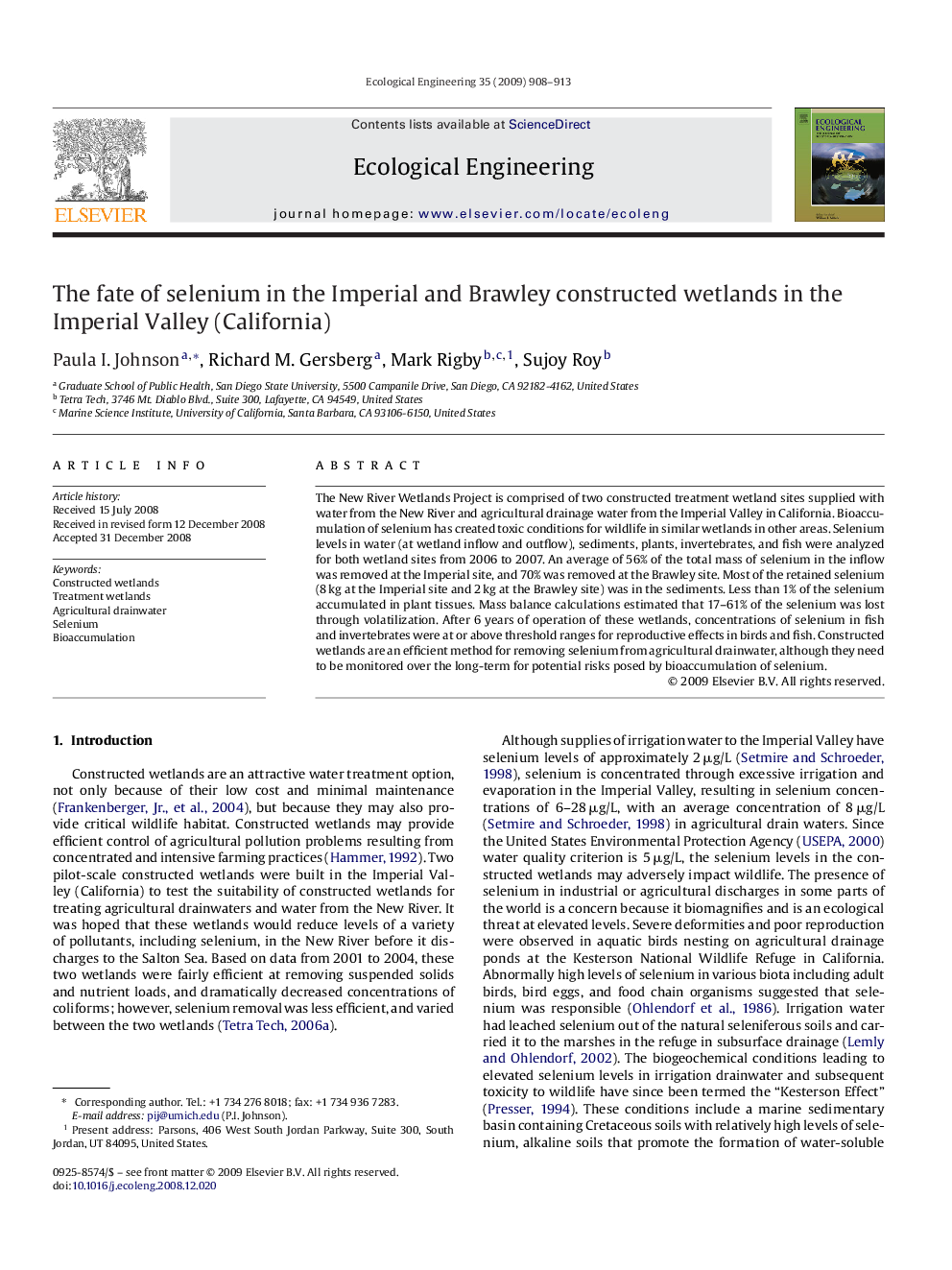| Article ID | Journal | Published Year | Pages | File Type |
|---|---|---|---|---|
| 4390963 | Ecological Engineering | 2009 | 6 Pages |
Abstract
The New River Wetlands Project is comprised of two constructed treatment wetland sites supplied with water from the New River and agricultural drainage water from the Imperial Valley in California. Bioaccumulation of selenium has created toxic conditions for wildlife in similar wetlands in other areas. Selenium levels in water (at wetland inflow and outflow), sediments, plants, invertebrates, and fish were analyzed for both wetland sites from 2006 to 2007. An average of 56% of the total mass of selenium in the inflow was removed at the Imperial site, and 70% was removed at the Brawley site. Most of the retained selenium (8Â kg at the Imperial site and 2Â kg at the Brawley site) was in the sediments. Less than 1% of the selenium accumulated in plant tissues. Mass balance calculations estimated that 17-61% of the selenium was lost through volatilization. After 6 years of operation of these wetlands, concentrations of selenium in fish and invertebrates were at or above threshold ranges for reproductive effects in birds and fish. Constructed wetlands are an efficient method for removing selenium from agricultural drainwater, although they need to be monitored over the long-term for potential risks posed by bioaccumulation of selenium.
Related Topics
Life Sciences
Agricultural and Biological Sciences
Ecology, Evolution, Behavior and Systematics
Authors
Paula I. Johnson, Richard M. Gersberg, Mark Rigby, Sujoy Roy,
